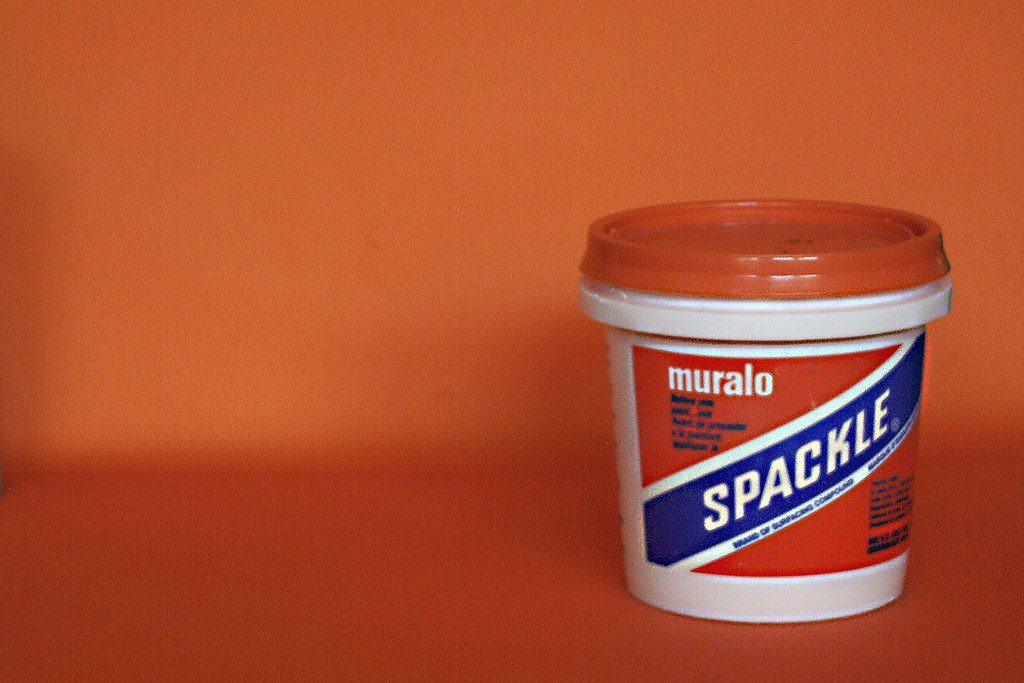Does Spackle Go Bad? (Answered In Detail)
When it comes to certain types of wall repairs, such as filling holes and dents, or fixing smaller damaged areas, there’s no better compound than spackle.
It’s elastic, with minimal shrinkage, and dries up very quickly, meaning you can paint or sand over it immediately.
However, as the spackle is not something you use every day and is commonly used for minor repairs, you will likely often find yourself in a situation where you have a batch left over after a job you’ve just finished.
So, sooner or later, you’ll probably wonder does spackle go bad and how long it can last.
Below, I’ll explain how long you can use spackle after the purchase and be certain that it’s still fit for the job and list the factors that impact its shelf life.
Table of Contents
Does Spackle Go Bad?
The spackle compound comes in several different formulations, each designed for a certain type of task.
Lightweight, all-purpose, vinyl, acrylic, and epoxy spackling compounds all have slightly different ingredients but do have one thing in common.
Every type of spackle will go bad after time, lose its potency, deteriorate, and become unfit for use.
There are different reasons for this. The compound may dry out, turn moldy, or become unusable in some other way.
Whatever the reason, it will lead to the spackle losing its strength and smoothing ability, which means it may go on the wall lumpy, dry slower, and be difficult to trowel to create a smooth surface.
How Long Does Spackle Last?
Unopened Container
Typically, the manufacturers set the expiry date of spackle at around 12 months from the date of its production.
Note that the spackle in the form of powder will have a slightly longer shelf life than the premixed version which comes in the form of a paste.
However, this shelf life is the best-case scenario as the spackle will last this long only if stored properly, in ideal conditions.
In real life, it will be somewhat shorter, as those ideal conditions are fairly difficult to achieve, so the more realistic period before the spackle goes bad is around 9 months.
Opened Container
The storage life of the spackle described above is valid only if the container is unopened.
In case you open the container and use the spackle, but have some left over for future jobs, the shelf life is dramatically reduced.
The best you can hope for after you’ve opened the container is a couple of weeks.
The spackle may still be usable after that time, but it will hardly provide optimal results when used.
Once you open the container and use up a portion of the spackle, the rest will be exposed to air and other damaging elements, no matter how tight you seal the container afterward.
So, if you haven’t spent up all the spackle for the job at hand, look to use the rest as soon as possible or it will become ineffective.
So, it’s a situation of use it or lose it.
How to Tell that Spackle Has Gone Bad

If you’re unsure if the spackle has gone bad and whether it’s still fit for use, keep an eye out for a few signs that can help you determine the state of the compound.
Appearance
Often a simple visual observation is more than enough to tell you if you can still use the spackle.
If it has gone bad, the spackle will look dry and separated, and its color will likely change a bit or at least become inconsistent.
Odor
Also, the foul odor coming from the spackle container is always a bad sign.
The compound may look normal, but if it smells bad its shelf life has likely expired and you shouldn’t use it.
The bad smell commonly indicates growing of some kind of bacteria or mold development.
Grip
Finally, the spackle may look and smell normal, but still, be unusable.
In that case, you will likely notice it only when you start applying it to the wall, as it won’t stick and will keep falling off the surface.
What Makes Spackle Go Bad?
It’s rather difficult to determine the precise time after which the spackle will no longer be useful, as there are several factors that impact his process.
Air, water, or mold development can all make the spackle go bad faster, but the level of exposure to each of these factors will determine how quickly that will happen.
Air
Probably the greatest problem that can shorten the shelf life of the space is its contact with air. This is the main reason why spackle is stored and sold in containers with tightly sealed tops.
As soon as the lid is opened and the spackle is exposed to air, it will start to dry out and deteriorate.
This property of spackle is, of course, useful when applying it to the wall as it means that it will dry faster and allow you to finish the whole project more quickly.
However, it is a serious issue when it comes to storing the spackle as it’s very hard to fully seal the container again once it’s been opened.
Chances are, some air will always get through.
Can You Use Spackle that’s Been Exposed to Air?
Depending on how long the spackle has been exposed to air, it may still be useful to some degree, as initially, only the surface layer will dry out.
The portion of the compound that’s nearer to the bottom of the container may still be fit for use, but it will likely lose some of its effectiveness.
Water
No matter if it’s water-resistant or not, the spackle in the container needs to be kept dry, as it will prolong its shelf life.
However, once you’ve opened the container and used some of the spackle, you may add a little bit of water to prevent the rest of the compound from drying out and becoming unusable.
Still, if you do this, there are a couple of things you’ll need to pay attention to.
Firstly, you should only add an extremely thin layer of water on top of the spackle. Adding too much water will likely ruin the spackle that’s been left over in the container.
Also, avoid using a putty knife or similar tools when doing this.
The tool may carry some bacteria and that, in combination with water, will create a favorable environment for mold growth.
Mold
Mold growth is another reason why spackle may quickly deteriorate and become unusable.
Once you open the container with a spackle, it will become exposed to a number of different contaminants.
Various microorganisms will penetrate the container while it’s open and once you close it for storage, the mold may start to develop.
As this is a rather common problem with this kind of compounds, some types of spackle have been specifically designed to be mold-resistant.
Using those means that they won’t allow the mold to develop that quickly, but there’s still some risk.
Mold-resistant spackle is typically intended for use in kitchens, bathrooms, and similar areas with high levels of moisture and is likely to last longer than other compounds.
However, you should be aware that, while these spackles are mold-resistant, they can still be damaged by air and water, just like any other type.
How to Store Spackle Compound at Home
While the shelf-life of the spackle is fairly limited, proper storage is likely to make it last and keep it usable for a bit longer.
Although storage requirements for spackle are not too complicated, there are a couple of things you should take into consideration.
I already explained that exposure to air will quickly dry the spackle and render it useless.
So, make sure that the container with spackle is sealed as tightly as possible, to prevent air from penetrating inside.
Even if you have spackle in powder form, keep the bags in an airtight and waterproof container.
Even though the spackle should be stored in a cool and dry place, make sure it doesn’t get frozen during winter, especially if you’re using a pre-mixed compound.
If you allow this to happen, the compound will dry out, the components will separate, and the mixture will become solid.
Conclusion
Spackle is a great thing to have around the house as it’s very handy and easy to use for all small and quick repairs of wall imperfections.
However, be aware that, once you purchase it, the spackle won’t last forever. It has a limited shelf life and it will likely go bad after 9-12 months.
This time will decrease even more if you open the container and use a portion of the compound. In that case, you probably only have a couple of weeks before it goes bad.
While it may still be useful, it will lose a lot of its strength and won’t be as adhesive and easy to smooth out as the first time you take it out of the container.
To make sure you only use spackle in a proper condition, pay attention to any changes in visual appearance or smell.
If you notice a change of color and structure or foul odor, it’s best to discard the spackle and purchase a new batch.



















































































